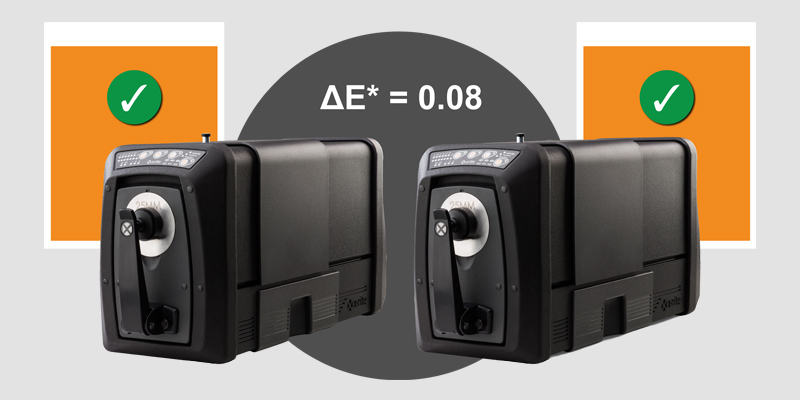
Choosing the right spectrophotometer is essential for achieving consistent, accurate color across your products and processes. Whether you're in printing, packaging, plastics, textiles, or cosmetics, understanding what to look for when buying a spectrophotometer can help you make a confident, informed decision. In this guide, we’ll walk you through the key features, types, and considerations to ensure your investment supports both your quality standards and operational goals.
- Define Your Use Case
Start by identifying what you’ll be measuring and why:- Surface type: textiles, plastics, liquids, paper, etc.
- Measurement goals: quality control, formulation, color matching, R&D
- Environment: lab, production floor, field use
- Understand Key Specifications
Here are the most important features to compare:
Measurement Geometry- 45/0 or 0/45: Mimics human vision; ideal for visual color matching.
- Sphere (d/8 or d/0): Measures gloss and texture; better for textured or shiny surfaces.
- Most devices cover 400–700 nm (visible spectrum). Some extend into UV or IR for specialty applications.
- Choose based on sample size:
- Small aperture: for small or detailed samples
- Large aperture: for textured or uneven surfaces
- Common illuminants: D65 (daylight), A (incandescent), F11 (fluorescent)
- Observer angles: 2° and 10° (standard viewing angles)
- Choose Between Types
Benchtop Spectrophotometers- High precision
- Ideal for labs and controlled environments
- Lightweight and mobile
- Great for fieldwork or production lines
- Real-time measurement during production
- Used in automated quality control systems
- Software & Connectivity
- Data analysis tools: Look for software that supports CIE Lab, Delta E, and trend analysis.
- Connectivity: USB, Bluetooth, Wi-Fi for integration with PCs or cloud systems
- Compatibility: Ensure it works with your existing color management systems
- Calibration & Maintenance
- White tile calibration is standard; some models offer auto-calibration.
- Check for:
- Ease of cleaning
- Availability of calibration standards
- Manufacturer support and warranty
- Budget Considerations
- Entry-level handheld: $1,000–$3,000
- Mid-range benchtop: $5,000–$10,000
- High-end or inline systems: $15,000+
- Software licenses
- Accessories (calibration tiles, sample holders)
- Training and support
- Final Checklist Before Buying
- Matches your sample type and environment
- Offers required geometry and spectral range
- Compatible with your workflow and software
- Includes calibration tools and support
- Fits within your budget
About X-Rite
X-Rite is a global leader in color science and technology, offering innovative solutions for color measurement, management, and communication. With decades of expertise across industries—from print and packaging to automotive and cosmetics—X-Rite empowers businesses to achieve color accuracy and consistency at every stage of production. Our portfolio includes industry-leading spectrophotometers, software, and services designed to streamline workflows and elevate quality control. Learn more at www.xrite.com.
To learn more, get in touch with our Color Experts.
